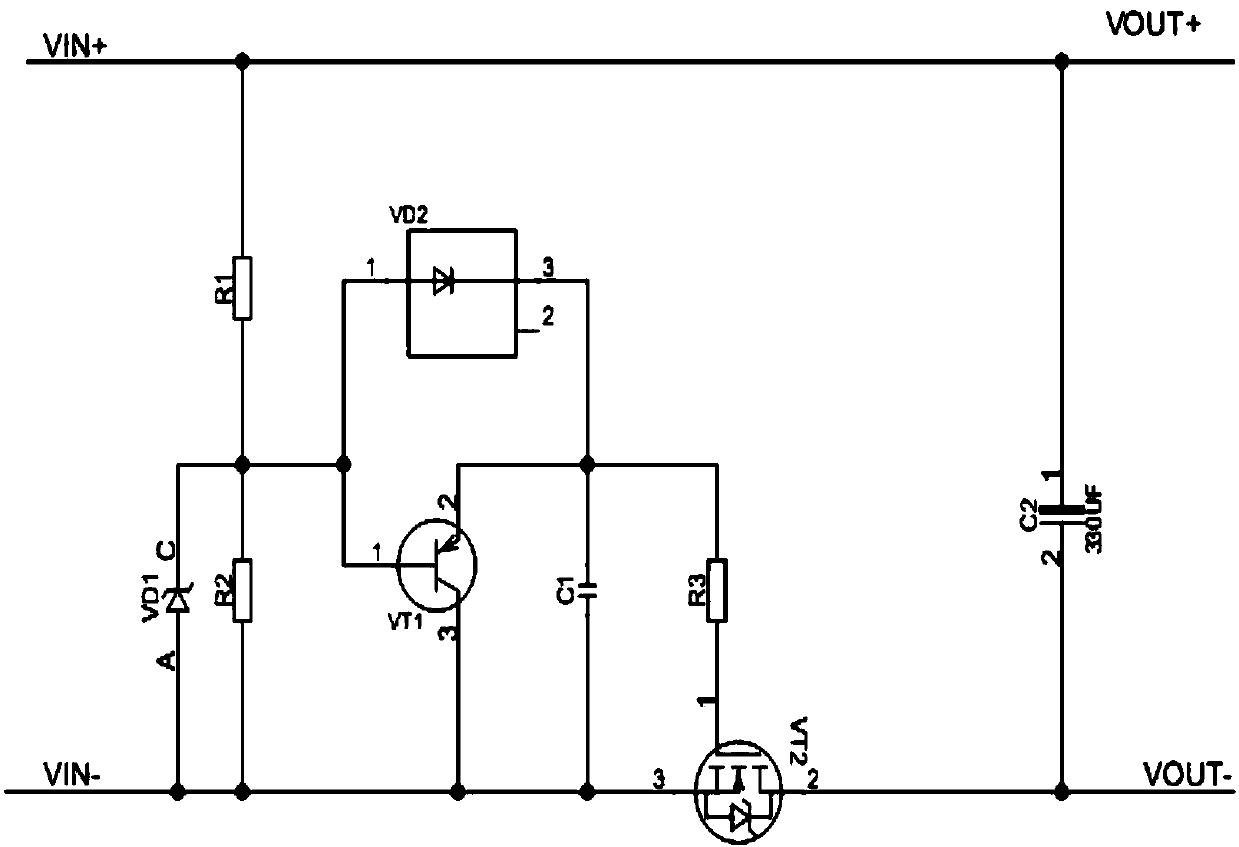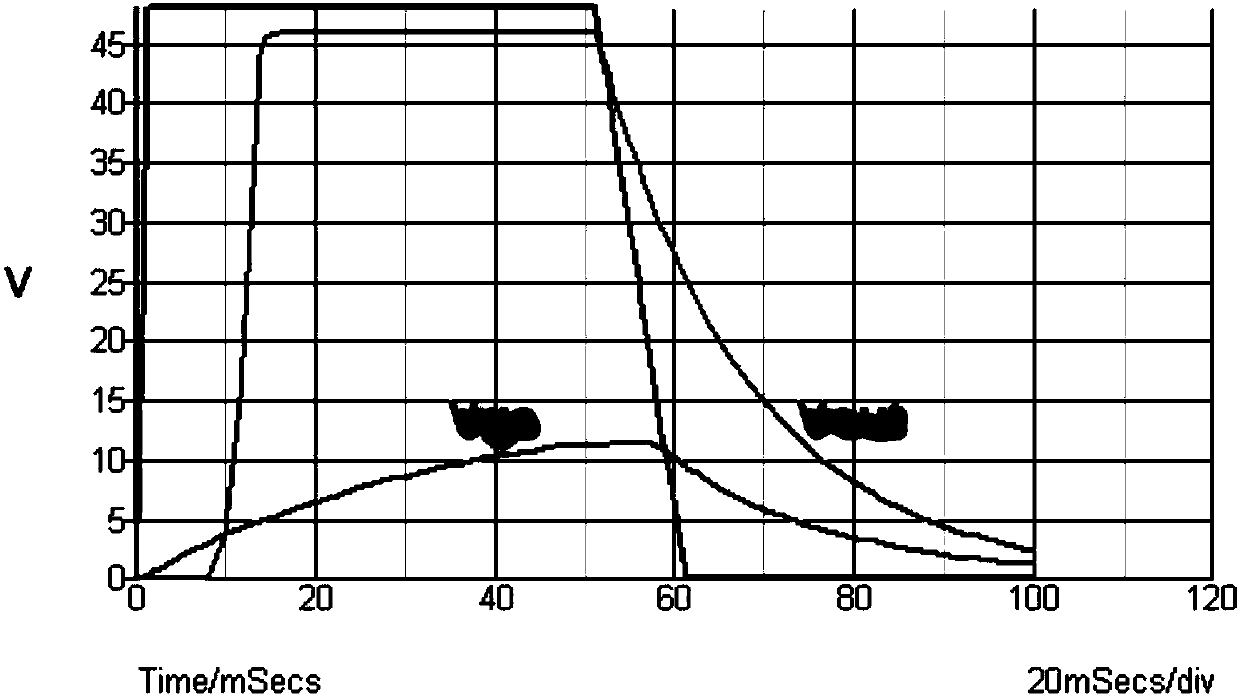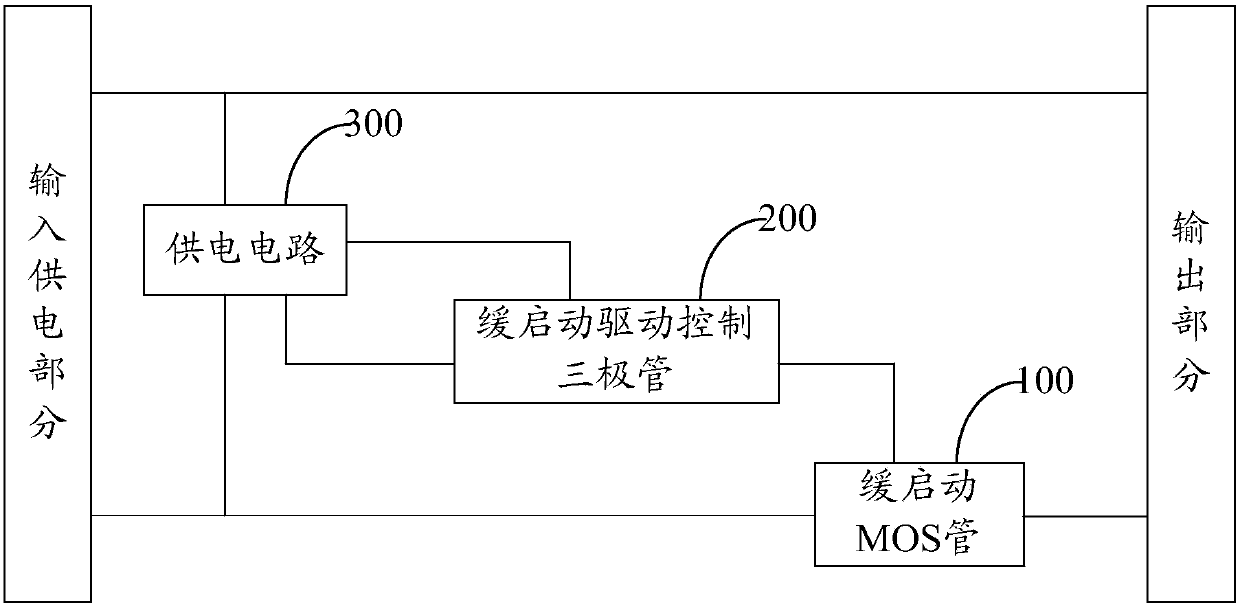Slow-starting circuit, power panel provided with slow-starting circuit, and service single board provided with slow-starting circuit
A slow-start circuit and slow-start technology, applied in electrical components, electronic switches, output power conversion devices, etc., can solve problems such as large inrush current and instantaneous stress, unstable socket connection, damage risk, etc., to speed up the discharge. speed, reducing the probability of damage, and improving reliability
- Summary
- Abstract
- Description
- Claims
- Application Information
AI Technical Summary
Problems solved by technology
Method used
Image
Examples
no. 1 example
[0031] The first embodiment of the present invention is a slow start circuit, the slow start circuit is connected between the input power supply part and the output part, such as image 3 As shown, the slow start circuit includes the following components: a slow start MOS transistor 100, a slow start drive control transistor 200 and a power supply circuit 300, wherein,
[0032] The power supply circuit 300 supplies power to the slow-start drive control transistor 200 and determines the delay time of the slow-start drive control transistor 200 from off to on;
[0033] When the power supply input end is turned on, the power supply circuit 300 supplies power to the slow-start drive control transistor 200 and makes the slow-start drive control transistor 200 conduct after the delay time, and starts the slow-start MOS transistor 100 when the slow-start drive control transistor 200 is turned on. ;
[0034] Since the power input terminal is powered off, the power supply circuit 300 ...
no. 2 example
[0035] The second embodiment of the present invention is a slow start circuit, the slow start circuit is connected between the input power supply part and the output part, such as Figure 4 As shown, this embodiment is roughly the same as the first embodiment, the only difference is that this embodiment further defines an implementation of the power supply circuit:
[0036] The power supply circuit 300 includes: a first power supply unit 301 and a second power supply unit 302, wherein the first power supply unit 301 supplies power to the emitter of the slow start drive control triode 200 and provides a slow start capacitor in a manner of resistive voltage division; The power supply unit 302 supplies power to the base of the slow-start drive control transistor 200 in the form of voltage division by a resistor and a voltage regulator; the collector of the slow-start drive control transistor 200 is connected to the gate of the slow-start MOS transistor 100 .
[0037] Specifically...
no. 3 example
[0040] The third embodiment of the present invention is a slow start circuit. The slow start circuit is connected between the input power supply part and the output part. This embodiment is roughly the same as the second embodiment. Some preferred implementations are provided on the basis of examples:
[0041] Preferably, the slow start circuit of this embodiment further includes: a current limiting resistor connected between the collector of the triode and the gate of the slow start MOS transistor to prevent the slow start MOS transistor from Gate overcharge voltage.
[0042] Preferably, the slow start circuit of this embodiment further includes: connected between the collector of the triode and the source or drain of the slow start MOS transistor and used to adjust the gate of the slow start MOS transistor Potential voltage divider resistors.
[0043] Preferably, the slow-start circuit in this embodiment further includes: a voltage regulator transistor connected between th...
PUM
 Login to View More
Login to View More Abstract
Description
Claims
Application Information
 Login to View More
Login to View More - R&D
- Intellectual Property
- Life Sciences
- Materials
- Tech Scout
- Unparalleled Data Quality
- Higher Quality Content
- 60% Fewer Hallucinations
Browse by: Latest US Patents, China's latest patents, Technical Efficacy Thesaurus, Application Domain, Technology Topic, Popular Technical Reports.
© 2025 PatSnap. All rights reserved.Legal|Privacy policy|Modern Slavery Act Transparency Statement|Sitemap|About US| Contact US: help@patsnap.com



